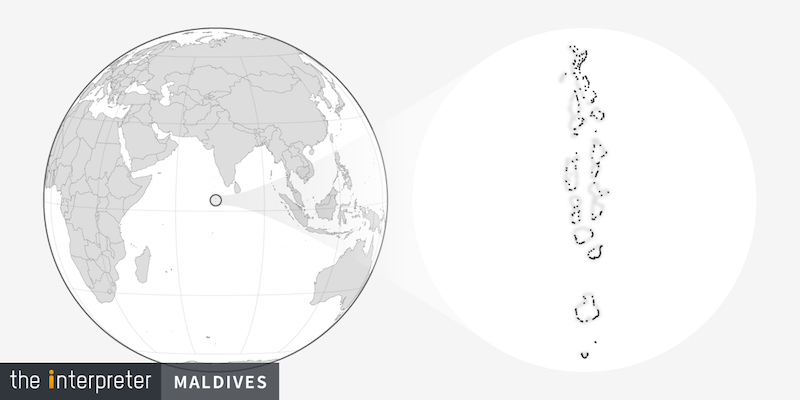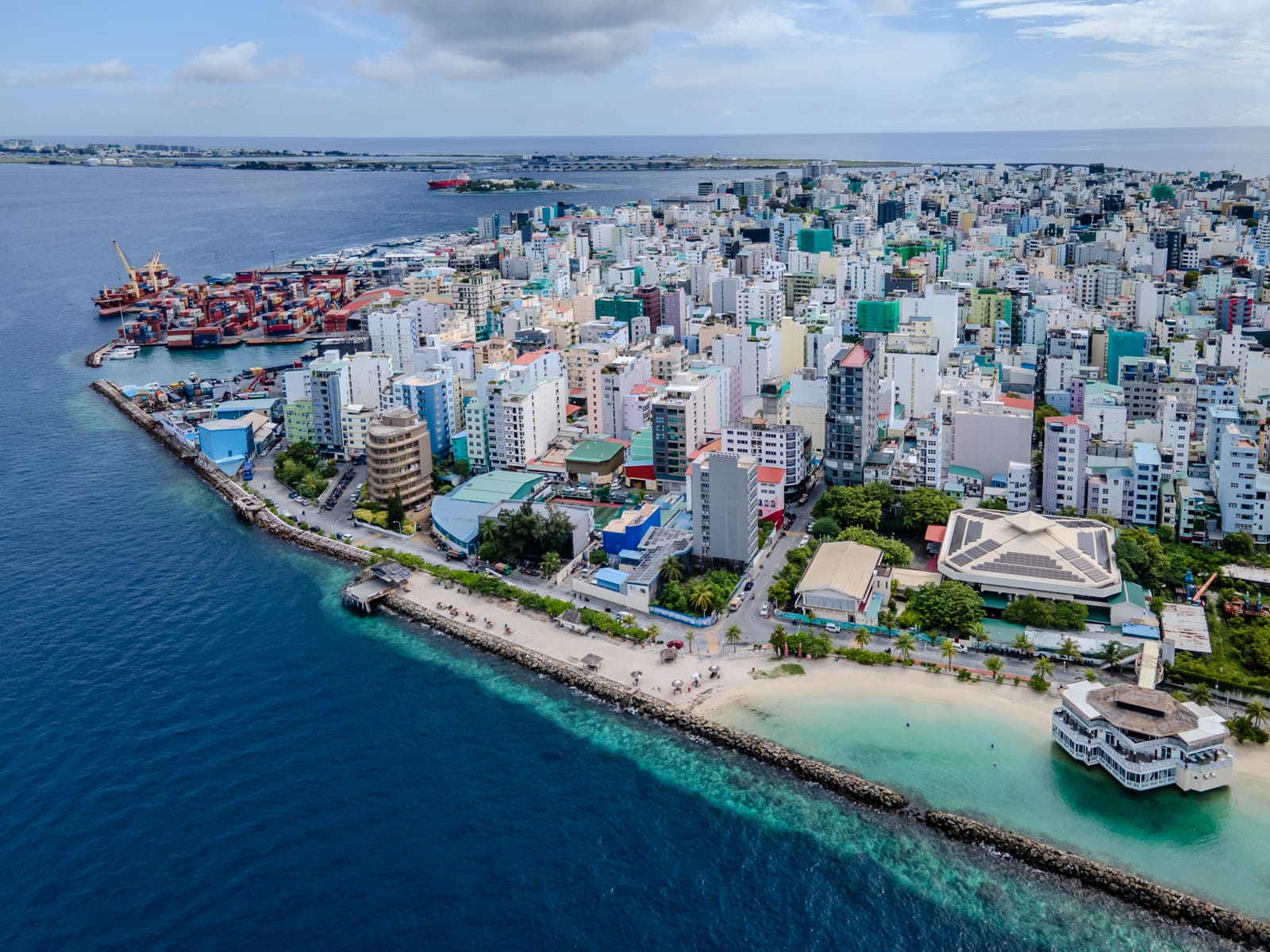Coral reefs, ring-like atolls, attractive beaches and teeming marine life – the Maldives is renowned for its scenic beauty. But these waterside attractions make the pressure on fresh water supplies in the Indian Ocean archipelago nation all the more incongruous. Water shortages are expected to grow worse with climate change. And for a nation dependent on tourism, and for the capital Malé, one of the most densely populated cities in the world, this spells trouble.
Islands in the Maldives are predominantly low-lying, with an average elevation above sea level of only 1.5 metres. Experts estimate that sea level rise could submerge 80 per cent of the Maldives by 2050. The United Nations Intergovernmental Panel on Climate Change (IPCC) warned in 2007 that rises of 18-to-59 centimetres would make the Maldives virtually uninhabitable by the end of the century. This change exposes the islands to seawater submersion, potentially contaminating the already limited groundwater reserves. Shifting weather patterns are also affecting tropical monsoon climate, defined by wet and dry seasons.
Water has become a contested resource among Maldives’ international partners.
Freshwater supplies are now a primary concern. The nation continues to rely on seasonal rainfall, with extended dry spells exacerbating shortages. In the past, the Maldivians have depended on rainwater harvesting and shallow groundwater wells to fulfil their freshwater requirements. However, as the number of people living in the country increases (the population has grown from 300,000 in 2004 to more than 520,000 today), and tourists come, these water resources cannot meet the need.

The country has installed desalination plants to address this issue, transforming seawater into potable water. The country’s largest plant produces 20,000 cubic metres of fresh water per day. Advances in desalination technology also holds promise. But water distribution remains a problem. Desalination is cost-intensive, necessitates significant energy, which can add to carbon emissions. Extensive infrastructure needed to distribute fresh water across the country. For a nation made up of hundreds of islands spanning 90,00 square kilometres, that’s a significant financial burden on the small Maldives’ economy.
Water has become a contested resource among Maldives’ international partners. China recently donated 1,500 tonnes of drinking water, feeding into fears about rivalry with India regional for influence. Similarly, in 2014, India launched “Operation Neer” to help the Maldives deal with water scarcity following a breakdown at its main desalination plant, with the Indian Air Force making an emergency airlift of 374 tonnes of drinking water to Malé and ships later delivering 2,000 tonnes more.
Water security remains a problem on the most vulnerable islands. The Green Climate Fund has previously partnered the Maldivian government in a US$28 million project to ensure water supplies for residents most at risk. This resulted in a new climate-resilient “integrated water resources management system” operating on the four main islands of Nolhivaranfaru, Foakaidhoo, Maduvvari, and Dharavandhoo, bringing together rainwater, groundwater, and desalinated water.
But more measures are needed. This includes implementing water policies that regulate and protect water sources and promote sustainable practices. The installation of greywater recycling systems in homes and businesses would also assist. This could pair with investment in technologies to improve water conservation, as well as infrastructure for collection, storage, and distribution.
Otherwise, it might not take until the seas rise before this geographically significant nation is parched.


